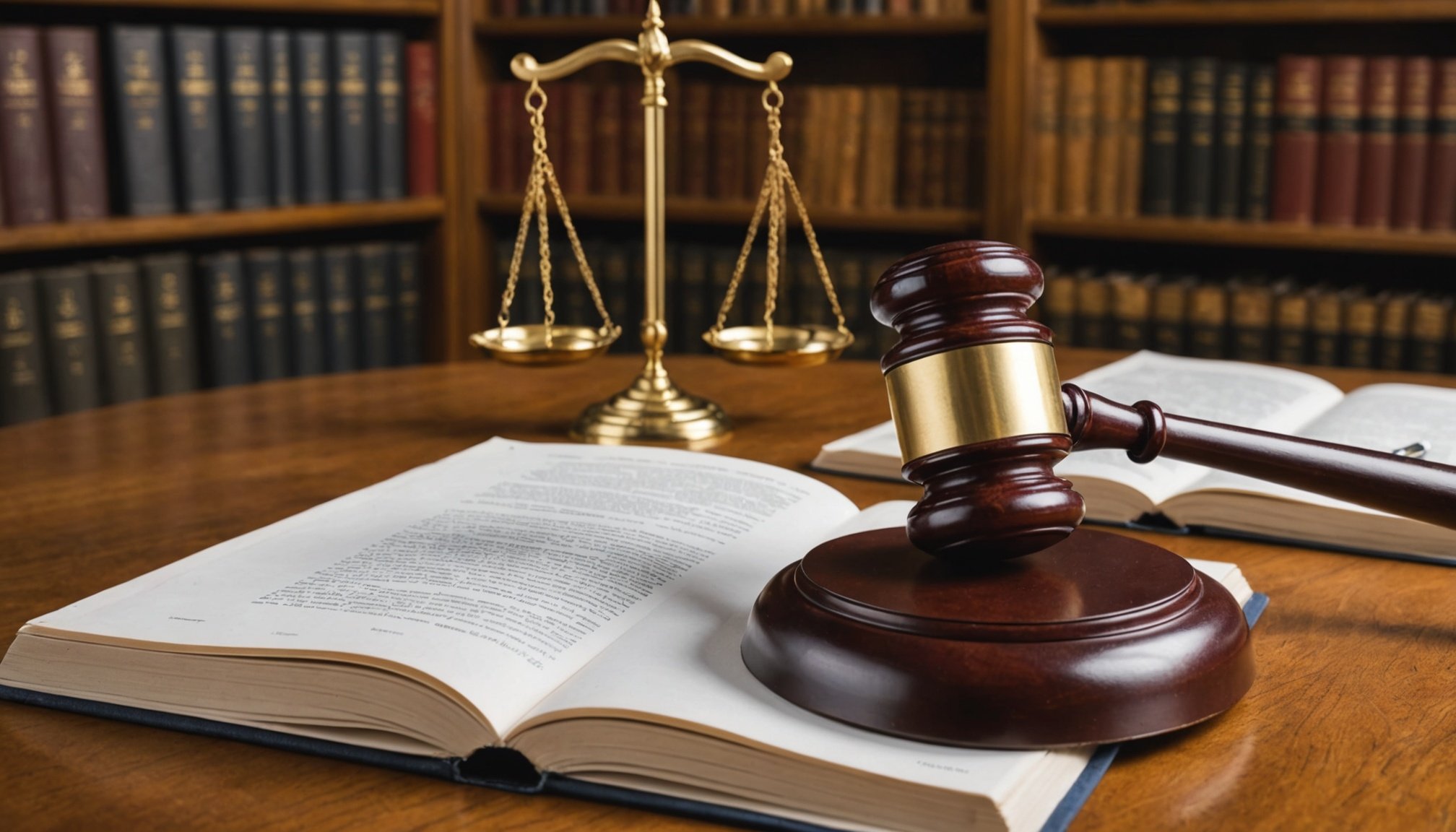UK Business Guide: Crucial Legal Tips for Protecting Your Intellectual Property Rights
Protecting your intellectual property (IP) is a cornerstone of any successful business, especially in the UK where intellectual property laws are robust and designed to foster innovation and creativity. Here’s a comprehensive guide to help you navigate the complex world of intellectual property protection and ensure your business remains competitive and secure.
Understanding the Types of Intellectual Property
Before you can protect your intellectual property, it’s essential to understand the different types that exist. Here are the main categories:
Also read : UK Business Compliance: Key Legal Steps for Robust Whistleblower Protection
Patents
Patents protect specific inventions that are novel, involve an inventive step, and are industrially applicable. These safeguard the functionality of a product or process, not just its appearance. To obtain a patent in the UK, you must file a patent application at the UK Intellectual Property Office (UKIPO), including detailed documents and often drawings that outline the technical aspects of the invention[1].
Trademarks
Trademarks protect your brand identity, including logos, names, and slogans. Registering a trademark ensures your brand stands out in the market and reduces the risk of infringement. Trademarks can be registered at the UKIPO and last for 10 years, with the option to renew every 10 years[1].
Also read : Crucial Guide for UK Enterprises to Master Global Patent Registration
Copyrights
Copyrights automatically protect original works like written content, music, and art. In the UK, copyright protection arises on the creation of an original work, and it is not necessary to register it. However, keeping records of the creation process is crucial for enforcement. Copyright protection typically lasts for 70 years after the author’s death[1][3].
Design Rights
Design rights safeguard the aesthetic and visual design of your products. There are two types of design rights in the UK: unregistered design rights, which arise automatically, and registered design rights, which can be obtained by filing an application at the UKIPO. Registered design rights protect the visual appearance of a product, including its shape, configuration, and decoration, for up to 25 years with renewals every five years[1].
Trade Secrets
Trade secrets cover a broad spectrum of information with inherent economic value, such as formulas, practices, processes, and patterns. While trade secrets cannot be registered, they are protected through actions for breach of contract, breach of confidence, or under the Trade Secrets Regulations[1].
How to Protect Your Intellectual Property
Protecting your intellectual property is a multi-step process that involves several key actions.
Conducting an IP Audit
Before launching your business or introducing new products, it is essential to conduct an IP audit. This assessment helps identify your existing IP assets, understand what needs protection, and highlight potential risks of infringement. An IP audit guides your overall IP strategy in alignment with your business goals[1].
Registering Your IP
While some rights are automatic, proactive registration is critical for patents, trademarks, and designs.
- Patents: File a patent application at the UKIPO, including detailed documents and drawings that set out the technical aspects of your invention. Patents must be renewed annually after the fourth anniversary of filing, up to a maximum of 20 years[1].
- Trademarks: File a trademark application at the UKIPO. Ensure thorough searches to avoid conflicts before applying. Trademarks need to be renewed every 10 years[1].
- Design Rights: For registered design rights, file an application at the UKIPO. Registered designs can protect the visual appearance of a product and last for up to 25 years with renewals every five years[1].
Monitoring and Enforcing Your IP Rights
Once registered, actively monitor your IP rights to detect unauthorized use.
- Regular Checks: Regularly check for unauthorized use of your IP. This can be done through market surveillance, online monitoring, and customer feedback[1].
- Legal Action: Be prepared to take prompt legal action against any unauthorized use. This can include actions for breach of contract, breach of confidence, or under specific IP laws[1].
- Education and Policies: Ensure your employees understand the importance of IP. Establish clear policies regarding confidentiality and ownership of work created during their employment. This can prevent disputes and help protect your IP more effectively[1].
Comparative Table: Types of Intellectual Property Protection in the UK
Here is a comparative table to help you understand the different types of IP protection in the UK:
| Type of IP | What It Protects | Duration of Protection | Registration Process |
|---|---|---|---|
| Patent | Novel, inventive, and industrially applicable inventions | Up to 20 years | File application at UKIPO, including detailed documents and drawings |
| Trademark | Brand identity, including logos, names, and slogans | 10 years, renewable | File application at UKIPO, ensure thorough searches to avoid conflicts |
| Copyright | Original works like written content, music, and art | Varies (typically 70 years after author’s death) | Automatic protection, no registration required |
| Design Rights | Aesthetic and visual design of products | Up to 25 years (registered), 10-15 years (unregistered) | File application at UKIPO for registered design rights |
| Trade Secrets | Formulas, practices, processes, and patterns with inherent economic value | Indefinite, as long as secrecy is maintained | No registration, protected through breach of contract, confidence, and regulations |
Practical Steps for Protecting Your Website and Online Content
In today’s digital age, protecting your website and online content is crucial.
Assert Your Copyright
Include a copyright notice in your website footer to notify visitors of your copyright. This notice should include the name of the copyright owner and the year of creation. For example:
© [Name of Copyright Owner] [Year of Creation - Current Year]
This simple step can deter unauthorized use and provide a clear indication of your rights[3].
Update Your Website Terms and Conditions
Ensure that your website terms and conditions include an intellectual property clause. This clause should outline what website visitors can do with your content and when they will require further permission. Keeping your terms and conditions up to date is essential for reflecting any changes in your intellectual property rights and licenses granted[3].
Register Your Logo or Business Name as a Trade Mark
If you have a unique business name or logo, consider registering it as a trade mark. Unlike copyright, trade marks do not arise automatically and require a formal application process. This can be a complex and expensive process, so it’s advisable to seek the help of expert trade mark lawyers[3].
Key UK Laws Governing Intellectual Property
Understanding the key laws governing intellectual property in the UK is vital for effective protection.
Copyright, Designs and Patents Act 1988
This act provides comprehensive guidelines on copyright, offering detailed protection for literary, musical, and artistic works. It ensures creators can maintain control over their creations and protect their potential revenue[2].
Trade Marks Act 1994
This act governs the processes surrounding trademark registration, preventing unauthorized use of distinctive symbols and ensuring brand integrity and consumer trust in the marketplace[2].
Resources and Templates for Compliance
Navigating the complex landscape of intellectual property compliance can be challenging, but there are several resources available to help.
UK Intellectual Property Office (IPO)
The UKIPO is a primary resource, providing comprehensive information about intellectual property laws. Their website features guides, FAQs, and updates on legislation, making it an indispensable tool for businesses[2].
Practical Templates
Practical templates, such as licensing agreements and contracts, are essential for safeguarding rights. These templates outline terms between rights holders and users, ensuring clarity and legal protection. Customizing these templates to suit specific business needs is crucial, and seeking advice from legal professionals or intellectual property specialists can be invaluable[2].
Avoiding Common Pitfalls
To protect your intellectual property effectively, it’s important to avoid common pitfalls.
Conduct Thorough Research
Understand the different types of intellectual property rights applicable to your work. This includes knowing which rights protect your content and how to strategize their protection[2].
Ensure Proper Documentation
Keep clear, date-stamped records for every piece of work. This prevents future disputes over the originality or ownership of your creations. Incomplete documentation and misunderstanding of rights duration and scope are common pitfalls that can be avoided with proper planning and legal advice[2].
Quotes and Insights from Experts
Protecting intellectual property is not just about legal compliance; it’s about securing the future of your business. Here are some insights from experts:
-
“Intellectual Property (IP) is a vital asset for start-ups and small businesses in the UK, offering a competitive edge and fostering innovation,” says Luke Franks of Franks & Co European Patent and Trademark Attorneys[1].
-
“Engaging with experienced legal professionals is essential to bypass potential legal entanglements. They provide insightful advice on copyright and trademark registration processes, term negotiations, and compliance requirements,” advises a legal expert from Harper James Solicitors[3].
Protecting your intellectual property is a multifaceted process that requires careful consideration and strategy. By understanding the different types of intellectual property, conducting thorough IP audits, registering your IP, and monitoring and enforcing your rights, you can ensure your business remains protected and competitive.
Here are some final practical tips to keep in mind:
- Conduct Regular IP Audits: Regularly assess your IP assets to identify what needs protection and potential risks of infringement.
- Register Your IP Proactively: Register patents, trademarks, and designs to secure legal protection.
- Monitor and Enforce Your Rights: Actively monitor for unauthorized use and be prepared to take legal action when necessary.
- Educate Your Employees: Ensure your employees understand the importance of IP and establish clear policies regarding confidentiality and ownership.
- Seek Legal Advice: Engage with legal professionals to navigate the complexities of IP law and ensure you are fully compliant.
By following these guidelines and utilizing the right tools and resources, UK businesses can effectively safeguard their new inventions and creative works, ensuring a strong foundation for innovation and growth. Remember, protecting your intellectual property is not just about legal compliance; it is about securing the future of your business.











